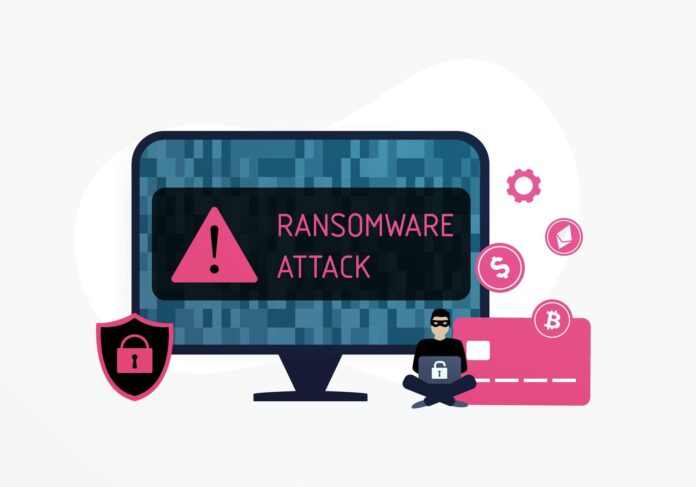If you notice your internet speed taking a hit or getting notifications that you’ve reached your data cap, it could be an early sign of ransomware.
Also, watch out for unexplained CPU or disk activity and suspicious network communication.
The most obvious indicator is an extortion message displayed on your computer screen instructing you to pay a ransom within a specified timeframe. However, there are many more signs to be aware of.
Slow Computer
If your computer used to run quickly and efficiently, but now everything takes forever to start up or execute, that’s a good sign that it could be infected with malware. Malware is known to slow down computers by hogging random-access memory, or RAM.
Users typically know their systems and what usually causes them to run slow, so if you notice sluggish behavior that is out of the ordinary, it’s a surefire indicator of infection. You may also notice that your system settings are changed without your knowledge, such as a homepage that redirects to a site filled with popup ads or phishing scams.
Another sign is if your computer’s fan is constantly running and the hard drive light is always on, indicating that it’s consuming too many resources and limiting access to legitimate programs. Lastly, users should pay attention to the contents of their drives and be alert for any scrambled file names or data that looks like gibberish. That’s a sign that malware is eating up your computer’s RAM and encrypting your files.
Unusual Activity
When ransomware virus encrypts your files, it prevents you from accessing them. The hackers then display a message that informs you that you can’t recover your data without paying them a fee, typically in cryptocurrency. File changes, new file extensions, and other suspicious activity on a computer may indicate an infection.
Once the malware has been deployed, you may notice much data disappearing from your systems. This is a common tactic for ransomware, and it’s especially dangerous if the malware is a wiper, such as NotPetya or the recently discovered Ryuk. These wipers delete backup files, system restore points, and even the contents of the operating system’s cache.
It’s a good idea to back up critical information regularly to an external HDD or USB stick to protect against these threats. If you notice that your backups are being affected, isolating the infected device and disconnecting it from the network and Internet immediately is important. This can help slow down the spread of the attack and mitigate negative impacts on productivity and data availability.
Unusual File Extensions
Knowing uncommon file extensions can help you protect your computer from ransomware. These files often contain dangerous executable code and can threaten your system. Knowing what they look like can help you be more vigilant when scanning or opening files from the internet or attachments in emails.
Ransomware attacks are frequently increasing across all industries, with no business size immune from attack. Investing in regular backups and keeping them isolated from network-connected systems can limit the impact of a ransomware attack and speed up recovery times.
Once ransomware infects a computer, it will begin to encrypt files as it searches the network for more targets, including file servers and other workstations. Once it has encrypted enough data, it will display an on-screen message stating all files are locked and demanding ransom payment in virtual currency.
Security teams should monitor suspicious activity, such as an overabundance of file renames (dozens of files renamed within a short period should raise alarm bells). Other signs of ransomware include new copies of files with greater entropy than the original and unusual encryption or enumeration of files.
Unusual Software Installations
The most important thing to do once a ransomware attack is discovered is to shut down all systems that have been affected and disconnect them from networks. This may involve disabling Wi-Fi, turning off core network switches, and powering down systems. If systems that provide security or backups are impacted, it is essential to ensure the attacker cannot alter or delete data from those devices.
Victims often discover that their computers are infected with ransomware when they can no longer access data or receive on-screen notifications asking for a ransom payment to unlock or decrypt files. It is important to be vigilant and to keep operating systems, software, and applications current and updated with patches, fixes, and upgrades.
It is also important to create a disaster recovery plan that includes backing up data regularly and ensuring backups are complete. When ransomware attacks are detected, organizations must contact federal and local law enforcement immediately. This will help to ensure that the malware is not spread, to gather information about the attackers, and to prevent future attacks.
Unusual System Crashes
Ransomware is malware that holds files hostage and demands payment in exchange for their return. This type of malware has become particularly prevalent in recent years, culminating in massive attacks that hit businesses of all sizes.
Unusual system crashes, slower-than-normal program startups, unusual webpages you don’t recognize, new toolbars or search engines in your browser, and random network activity are signs of possible malware infection. Also, watch out for sudden loss of hard drive space and bloated system files that don’t belong on your machine.
Many cybersecurity experts recommend running a complete backup regularly to ensure that, should an infection occur, the worst data is restored, and a clean operating environment remains in place.
Additionally, it’s important to have security tools that prevent ransomware and other threats from communicating with attacker command and control servers.
This includes implementing a layered defense that combines antimalware with web application firewalls, intrusion prevention/detection systems, and deception-based detection that strategically plants hidden files on file storage systems to identify ransomware read/write behavior at the earliest attack stage.


